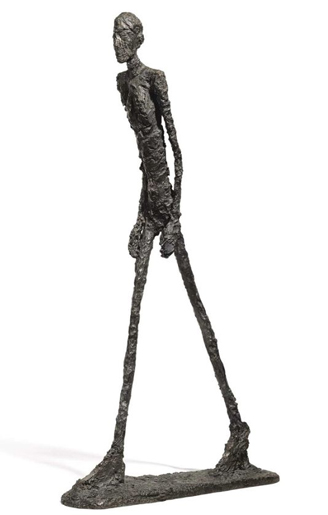Giacometti, a show of tormented genius and in-disputable greatness? Not so
With his Einstein hair and his perpetual aura of grizzled intensity, Alberto Giacometti always looked the part of the tormented genius. The notion that he actually was one has, gradually, been taking hold. Ever since his death in 1966, Giacometti has become an increasingly distant and lofty figure, propelled ever higher up the slopes of Parnassus by the windy rhetoric of his admirers. It has become conventional, indeed almost a commonplace, to describe his life as if it were one of the great mythic lives of modernist endeavour. Christ spent just 40 days in the wilderness but Giacometti, we are to recall with awe, spent 40 years, struggling with his demons in the cold, spartan quarters of his tiny Paris studio. Fuelled only by alcohol and an endless chain of cigarettes, he sought heroically to realise his "vision" - that melancholy view of the human condition embodied (if that is not too full a word to apply to such pinched and meagre forms) by the emaciated figures for which he is so well known.
The large retrospective exhibition of Giacometti's work that opens tomorrow at the Royal Academy is clearly not intended as an opportunity for audiences to reassess the artist's merit. He is considered to be above the indignities of reappraisal. That much was evident from the way in which the exhibition was installed on its previous showing, earlier this year, at the Scottish National Gallery of Modern Art, where dumb reverence before his genius was taken for granted and his least leaving accorded the sanctity of a relic. But before Giacometti is allowed to pass finally into 20th-century art's pantheon of indisputable greatness, it might be as well to detain him, at least for a moment...


